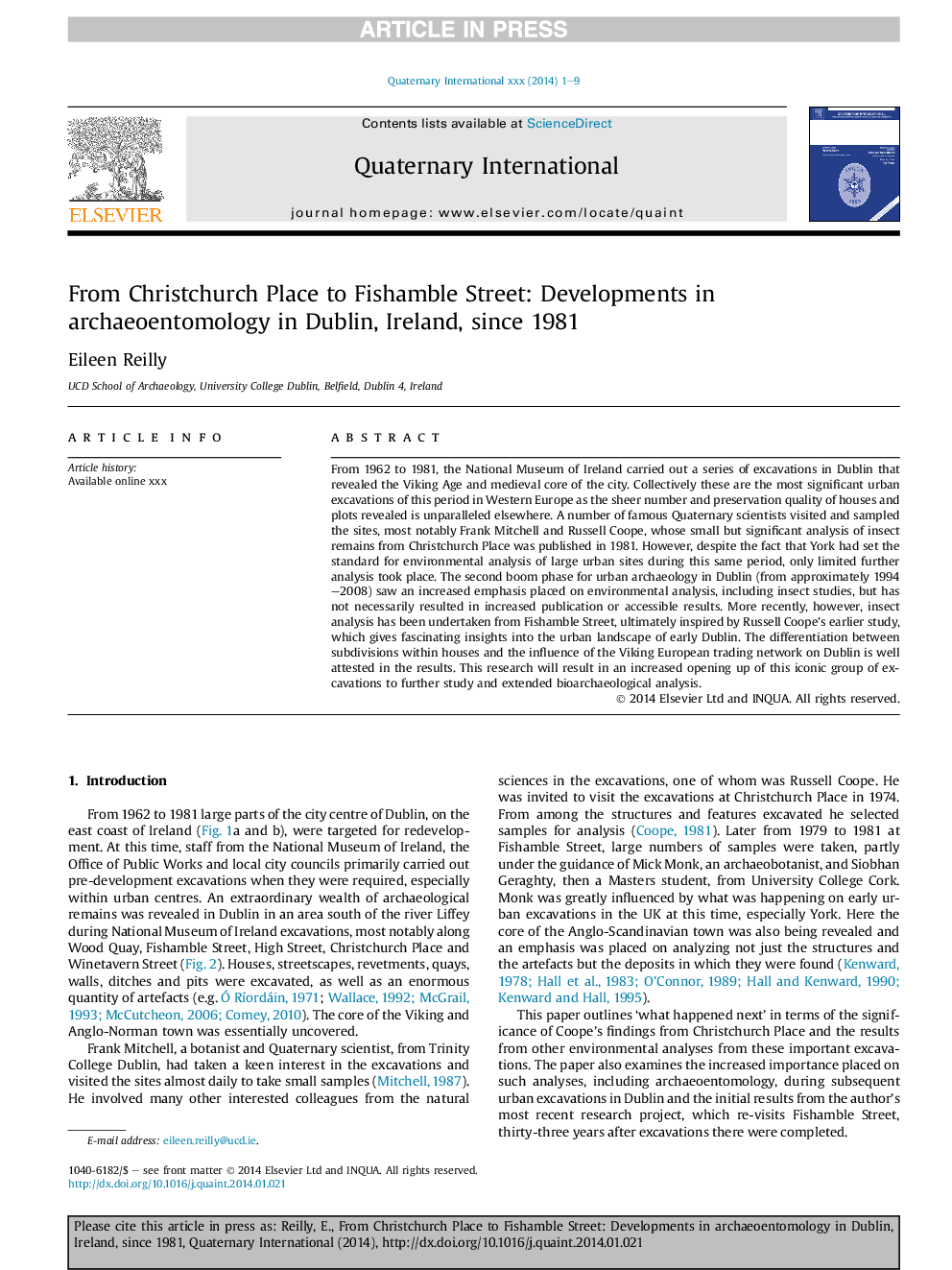| Article ID | Journal | Published Year | Pages | File Type |
|---|---|---|---|---|
| 7452250 | Quaternary International | 2014 | 9 Pages |
Abstract
From 1962 to 1981, the National Museum of Ireland carried out a series of excavations in Dublin that revealed the Viking Age and medieval core of the city. Collectively these are the most significant urban excavations of this period in Western Europe as the sheer number and preservation quality of houses and plots revealed is unparalleled elsewhere. A number of famous Quaternary scientists visited and sampled the sites, most notably Frank Mitchell and Russell Coope, whose small but significant analysis of insect remains from Christchurch Place was published in 1981. However, despite the fact that York had set the standard for environmental analysis of large urban sites during this same period, only limited further analysis took place. The second boom phase for urban archaeology in Dublin (from approximately 1994-2008) saw an increased emphasis placed on environmental analysis, including insect studies, but has not necessarily resulted in increased publication or accessible results. More recently, however, insect analysis has been undertaken from Fishamble Street, ultimately inspired by Russell Coope's earlier study, which gives fascinating insights into the urban landscape of early Dublin. The differentiation between subdivisions within houses and the influence of the Viking European trading network on Dublin is well attested in the results. This research will result in an increased opening up of this iconic group of excavations to further study and extended bioarchaeological analysis.
Related Topics
Physical Sciences and Engineering
Earth and Planetary Sciences
Geology
Authors
Eileen Reilly,
